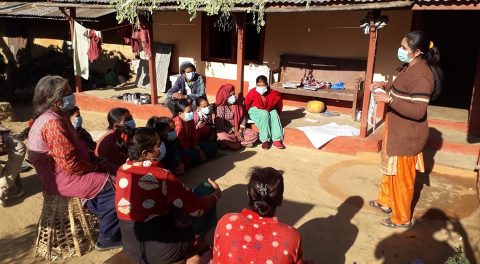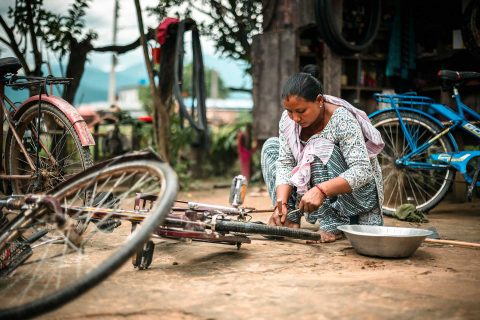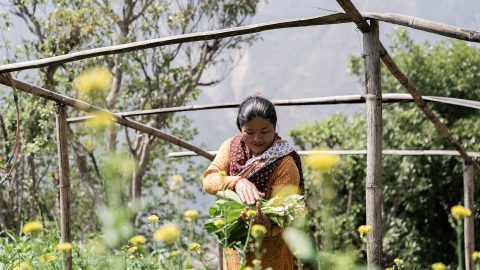NEPAL ON TWO WHEELS
NEPALONTWOWHEELS
Two-wheelers powered by people – bicycles serve many important purposes in Nepal
In the plains of Nepal, a bicycle is more than just a means of transportation. Stripped of all frills, bikes can withstand mud, uneven terrain, and heavy loads.
Text: Elisa Rimaila, Photos: Antti Yrjönen, Videos: Antti Yrjönen & Ville Nykänen
WITH ITS WHEELS lifted off the ground, the bike’s inner tube is removed in an instant using a tyre level and a chisel. From Jugmani Chaudhary’s movements, you can tell she has done this hundreds of times. She dips the inner tube into the water in the wash tub and squeezes it.
Today, most of the customers are schoolchildren, especially young girls, and their bicycles. The finished bikes lean against the wall of the house. The bicycles must be able to withstand rough riding in the Terai region of southwestern Nepal. There are no hills, but the bikes must be durable.

The roads in rural areas are unpaved and in poor condition, and dozens of kilograms of goods are loaded onto the bike rack. What kind of bike works best in the village of Malakhet?
“The best bikes here are regular women’s bikes. They are easy to maintain and durable.”

Queen of two wheels
As a bicycle repairer, Jugmani Chaudhary earns between 20,000 and 25,000 Nepalese rupees (approximately 120–150 EUR) per month. She uses the money to pay her children’s school fees and save for her own and her children’s future.

Over a dozen a day
Jugmani repairs 10–15 bicycles a day. The most common problems are broken tires, hand brakes, chains, and other wear parts.

Bike is best
The best bicycles in rural Nepal are ordinary women’s bikes. A bike can transport a load to the market faster than walking, and farmers save money because they don’t have to pay for a taxi.
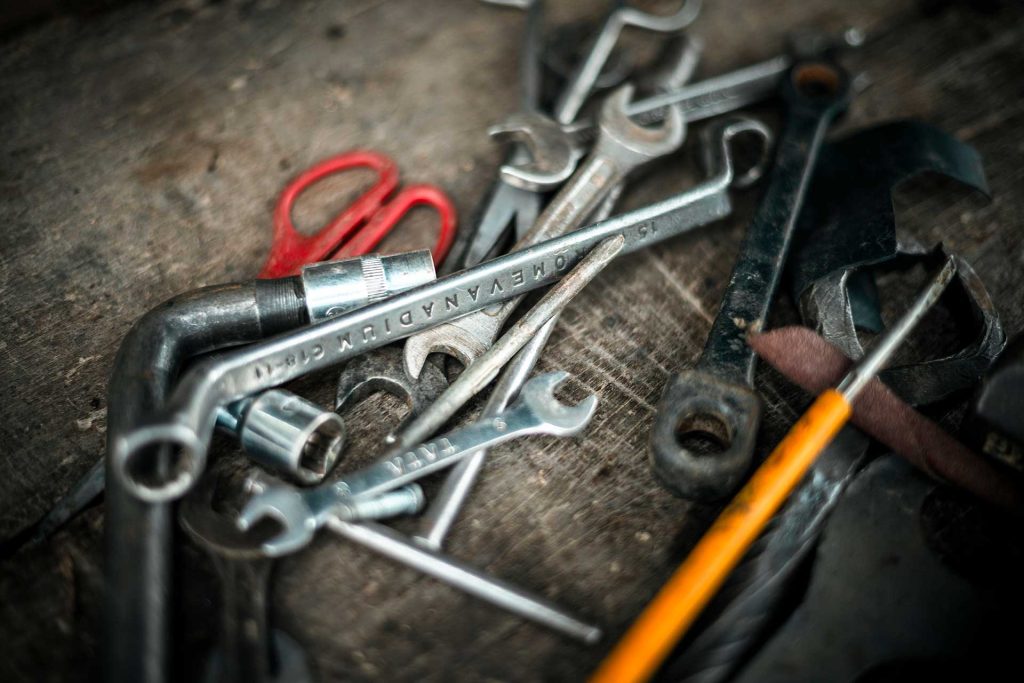
“I usually check the entire bike, even if it was brought to me because of a flat tyre. If I find other faults, I try to fix them at the same time,” Jugmani explains.
There’s a hole in the inner tube. It is revealed at a spot where the bike owner has apparently tried to patch it up with duct tape. Removing the tape, which sticks stubbornly to the rubber, is an extra step.
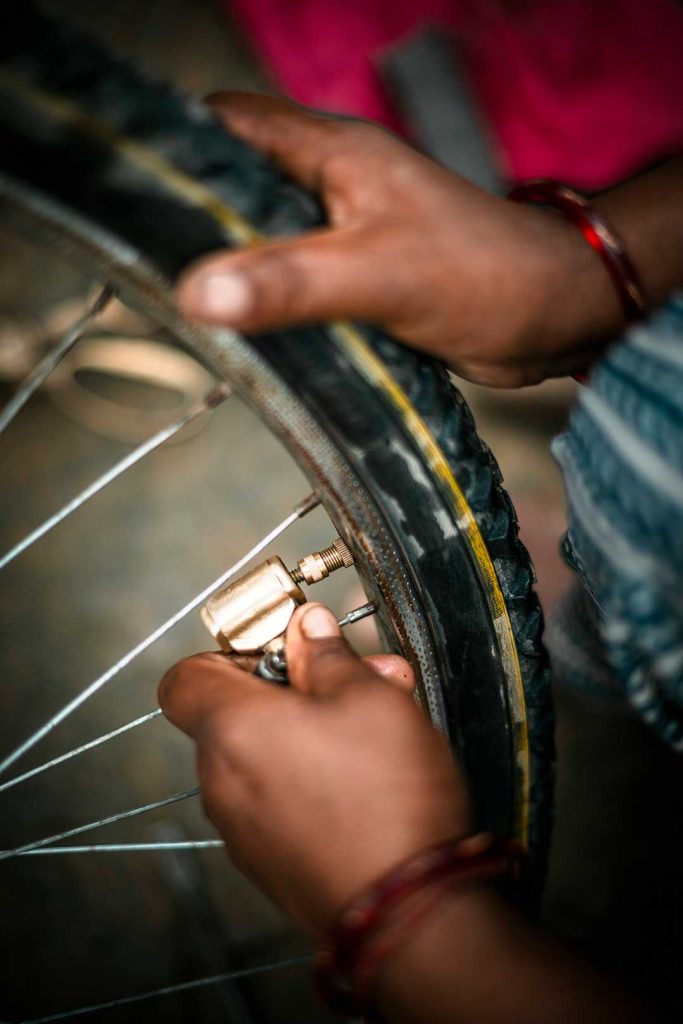


Everything runs smoothly on a bike
In the Shuklaphantan region of southern Nepal, Aarati Chaudhary, 32, cycles to the market in half an hour. Although the journey is slow with heavy boxes on a bumpy road, she would be able to carry much less produce on foot. A daily taxi ride would take away part of her income.
She received her trusty bike through FCA as part of a project that supports women’s livelihoods through vegetable farming. This journey, the box mainly contains pumpkins and courgettes.
THE SCHOOL BUS rattles past the yard, which has become muddy in the monsoon seaons rains. The bus is also a luxury that not all families can afford. Jugmani says that there are two schools nearby, and she has repaired many of the students’ bicycles. The main thing is that the children can get to school.
Jugmani’s hands lift the bike lying on its side. They squeeze the handbrake, check the angle of the handlebars and the tightness of the chains. A little adjustment is needed.
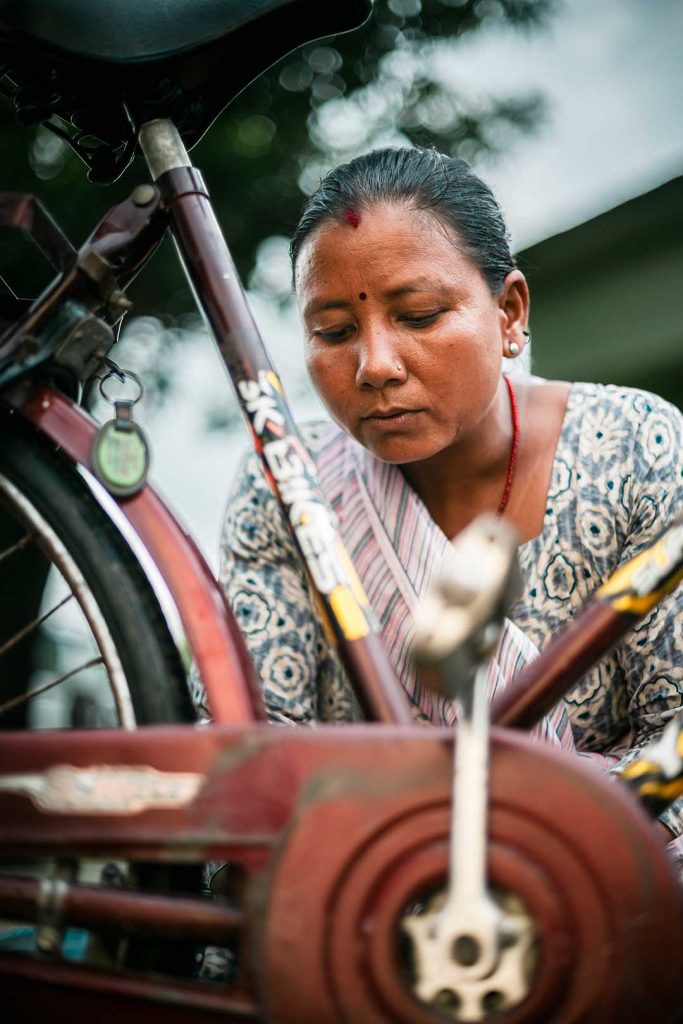
Entrepreneurship is a relatively new phenomenon in this community, especially for women. If women do have businesses, they tend to be in more traditional fields such as hairdressing and sewing. Jugmani Chaudhary has dared to follow her own path, even though bicycle repairers are usually men.
“I don’t know any other women in this community who would do this job.”
Women are mainly expected to get married and take care of the home and children. Girls’ education is not seen as particularly important. One reason for this is that, according to tradition, girls move into their spouse’s home when they get married and are no longer a financial support to their own parents.
“When I started, many people were skeptical and doubted my abilities. I just kept doing my job.”
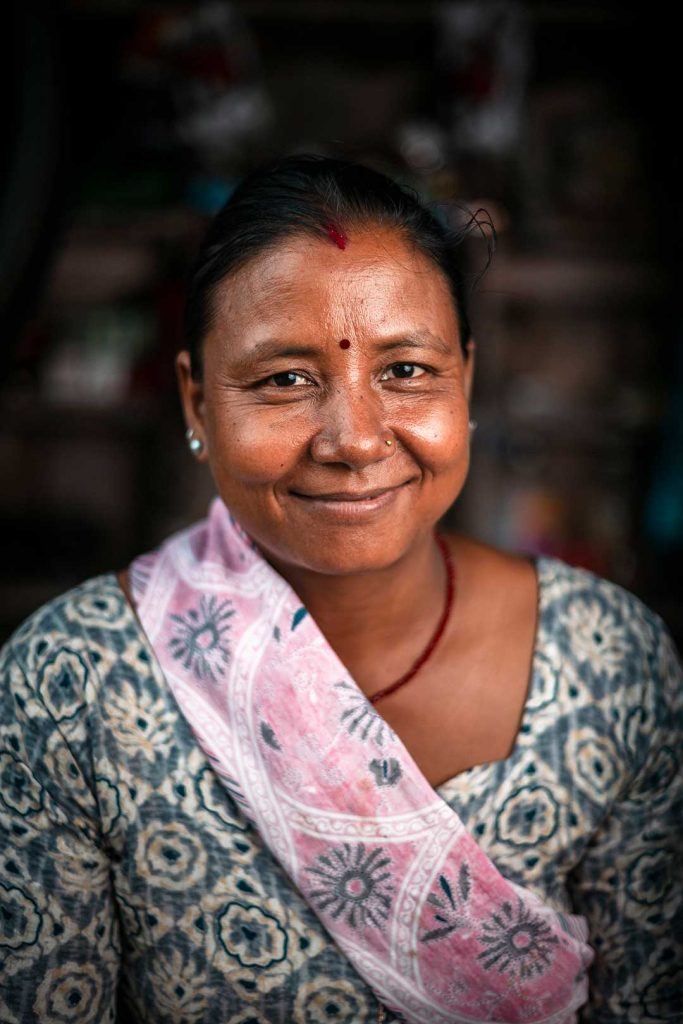
Jugmani Chaudhary
Jugmani Chaudhary, 39, is a former bonded labourer who was sent to work as a maid for a wealthy family at the age of 10. She was freed at the age of 14 and got married. She trained as a bicycle repairer in 2023.
FCA has supported Jugmani through a partner organisation in starting up the business and acquiring basic tools. The family includes her husband and adult daughter and son. In addition to bicycles, Jugmani repairs the tires of three-wheeled taxis.

